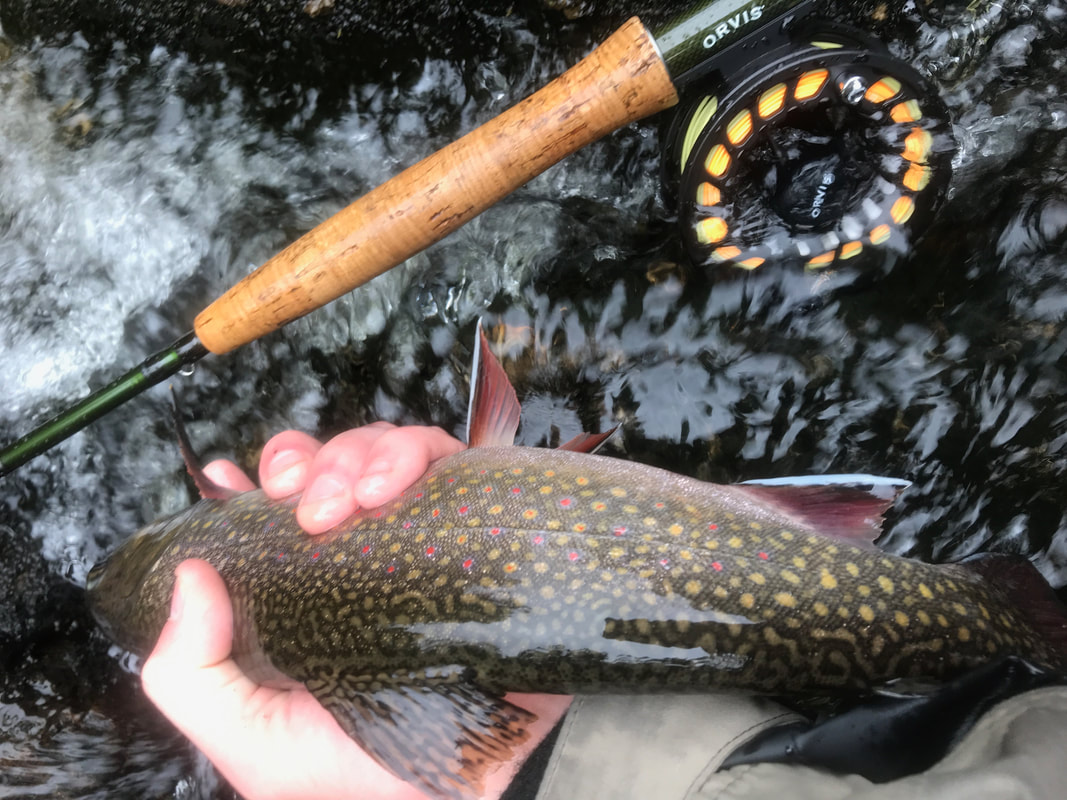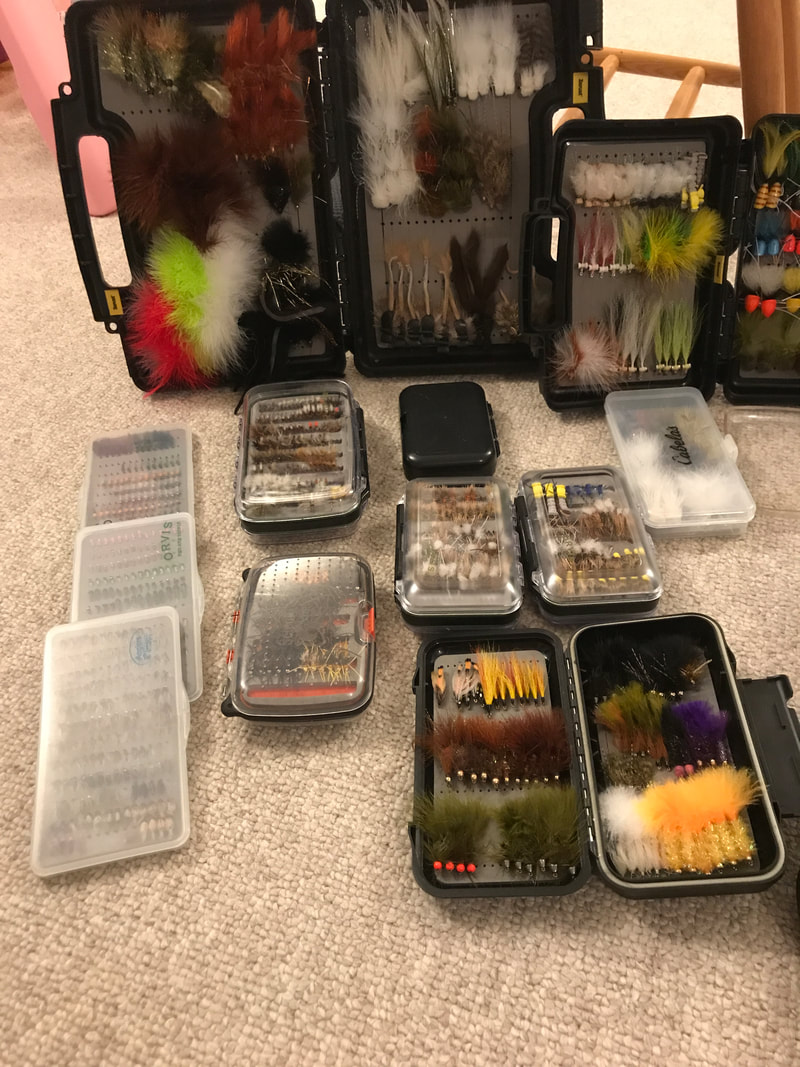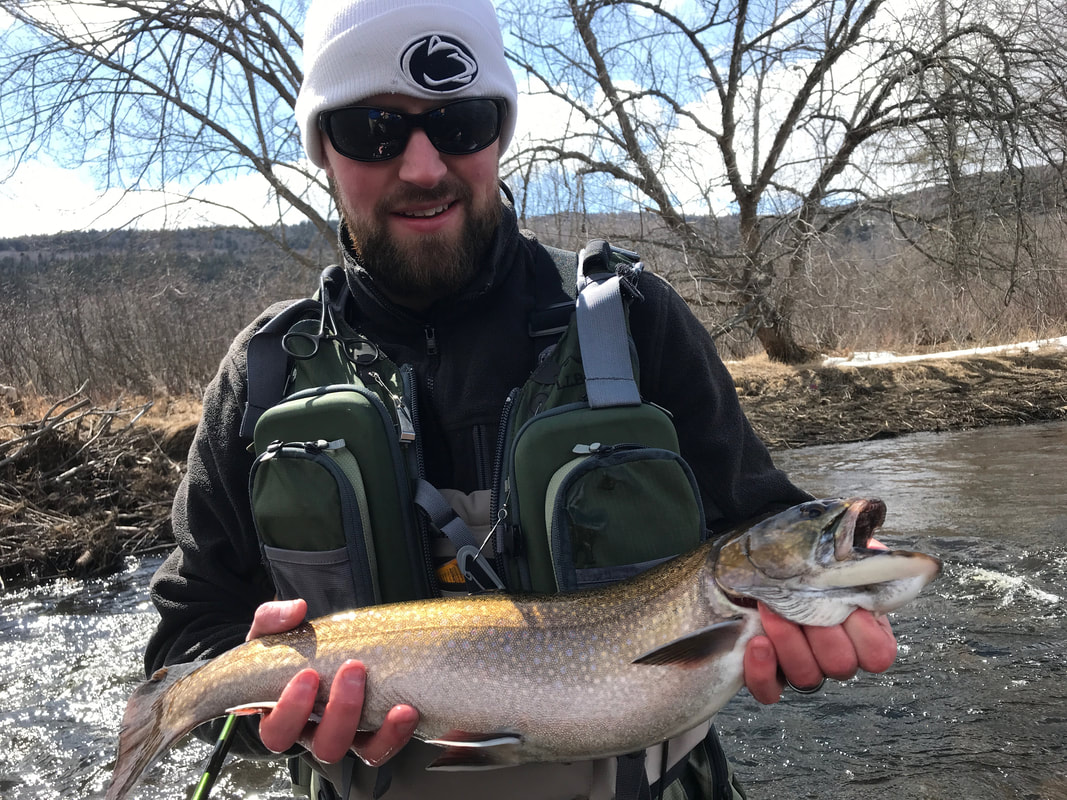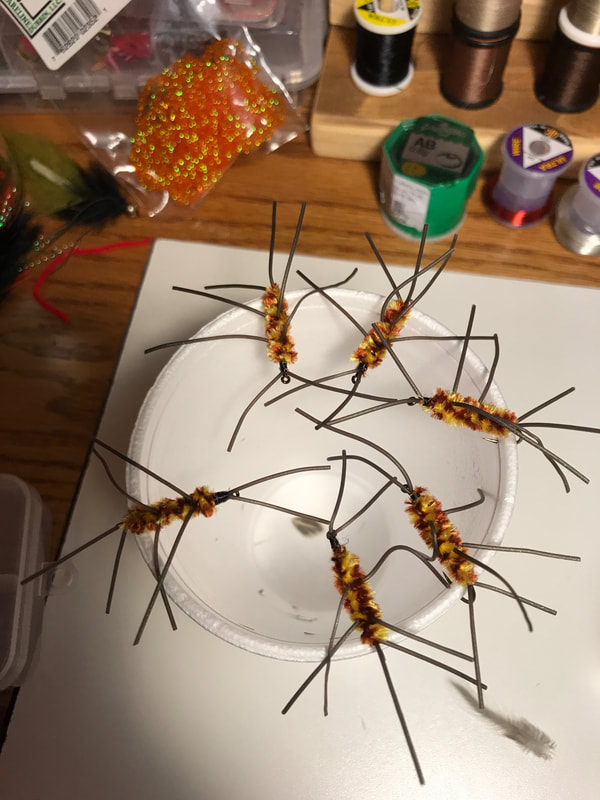|
Vince and I have been putting together some really great options for clients for this season and for years to come. Piggybacking the idea off our good guide friend, Kevin McKay, we have created options to offer clients FREE lodging when they book two trips with us. Instead of spending money for two nights at a local hotel, why not use that money to spend a second day on the water?
Our main goal is to offer free lodging accommodations to guests in three different parts of the state. Currently, Vince has lodging accommodations for the 2019 season available in two places. The first location is in Scarborough, which is 10 minutes for downtown Portland, for clients who would like to do smallmouth bass and pike float trips here in Southern Maine. Vince has an apartment attached to his home that he uses for AirBnB, which has two beds, a full bathroom, and a small kitchenette. The beauty of this option is that you can spend the day on the water having a blast chasing smallmouth bass or pike and then have dinner at one of Portland's many amazing restaurants in the evening. You could easily drive or take an Uber ride to downtown Portland. Or bring your own cooler items and grill your dinner right in the backyard. There's a gazebo on site to keep you away from mosquitoes and share your stories while enjoying a beverage or two! The second location is in a town that you've probably never heard of called Brookton. Brookton is a small town located about 1 ½ hours northeast of Bangor. It's also just thirty minutes from Grand Lake Stream, which is famous for landlocked salmon and brook trout fishing in the spring and fall. If you want to come in the summer, the smallmouth fishing is out of this world. You'll be on the water all day, and most likely not see another person. If you want that remote feeling, this is the place for you. This option includes two beds, a kitchen and rustic toilet accommodations :) Vince is working on putting finishing touches on these two spots for the upcoming season. We'll be sure to upload many pictures and videos of lodging accommodations in the coming months! Our second piece of news is that I have purchased land in Rangeley, and I'll be spending most of this season (when not guiding) building a cabin that can sleep up to 8 people. The property is within walking distance of a great brook trout pond, and within 10 minutes of downtown Rangeley. The Magalloway and Kennebago rivers are both within a 25 minute drive. I'm very excited to be able to offer FREE lodging to clients in the Rangeley region. When you fish with me in Rangeley, I don't just have you stay in one spot all day and watch a strike indicator. Don't get me wrong, we will nymph fish, but I'll have you catching fish on dries, streamers and emergers as well. I like to move around a lot and find fish. In other words, I like to help you HUNT for big trout and salmon. Keep checking back in as I'll be posting regularly as we build the cabin in Rangeley this summer. Check in to see the different stages and progress that we make throughout the season! We have about ⅓ of our schedule booked up for the season as of today (3/28). Book two days with us and get FREE lodging. We love the waters that we fish on and we know them well. We'll help you have successful days on the water and most likely teach you some new fly fishing techniques in the process!
1 Comment
I've been spending time this winter writing blogs for Maineflyfish.com. It's a great website with a ton of great resources and people who contribute years and years of fly fishing knowledge. It's a great website that you should check out if you live in Maine or are going to visit Maine.
We’re days away from the traditional opener here in Maine, and I totally get it. Like you, I’m getting sick of watching fly fishing films, reading new fly fishing books and rereading old ones, and searching Google Earth to try to find that new secret pond to try out this summer. I’m over the fly fishing shows (except for the Eldredge Bros Expo this weekend) and “winter” fishing, which feels more like just getting out for some fresh air, and dodging ice chunks. I know April isn’t the most productive month, but it beats the heck out of February fishing. You’re probably feeling like sitting at the vise is becoming more of a chore than a pleasure at this point. I get it. You’re ready to go! My intentions for this article are to point out some of the necessary preparations for the upcoming season. My hopes are that I’ll point out some things that may be new to you or at least a good reminder. If I’m missing something, please feel free to drop a line in the comment section. Fly Maintenance The first thing I do every winter is go through every fly box that I have and take inventory. I take every fly out of its slot and check for rust and durability/sharpness. I throw out flies that are chewed up or rusting, and I make a list of all the flies that I need to tie (or buy) to replenish my box. When I discover new flies, I like to add them to the list, but sadly, I probably won’t really try them because I’ll revert to my “old reliables.” If it ain’t broke, why fix it? As you can see from my pictures above, I have a good number of flies and I usually sort this process out over the months of January, February and March. I’m sure there are plenty of you out there though that think I don’t have enough flies! Rods and Reels To be honest, I don’t really take my rods out over the winter for inspection. It probably wouldn’t be a bad idea to use the wax to clean the ferrules so my rods don’t stick together all season. I do, however, make it a huge priority to give all of my fly lines a good hard scrubbing and change out leaders that are frayed or worn. This year I found that two of my reels had been either stepped on or dropped and they were warped. Both Redington reels… hmmm. I won’t go there, but it was good that I caught it in January instead of getting out there in May with a client and handing them faulty gear. Waders and Boots If you put away your waders with no leaks back in the fall, you probably won’t have any issues with them. There’s really no good way to know if you’ve sprung a leak until you get in the water. If you fish in April, you’ll know pretty quickly if you have a leak. For wading boots, I’ve found it helpful to change out laces that are ripping or using gorilla glue if parts of the boots are starting to rip apart. Don’t use too much though or it’ll look like you have spray foam insulation coming out of your boots! Other items I like to check my fly fishing vest pack and empty all of the pockets. It’s always good to restock things like Ben’s 100 bug spray or small bottles of sunscreen. I always ask for those two things and a fishing license each Christmas. They make great stocking stuffers. Check your floatant options and make sure they haven’t hardened up. Put some fresh batteries in your headlamp. Throw some waterproof matches in your pack and a ziploc bag with bandaids. Restock strike indicators and split shot. Check your nippers to make sure they’re not dull. Make sure you throw some fresh TP in your wading vest or boat. Lastly, don’t forget your 2019 fishing license. I always feel like a kid waiting for Christmas to come this time of year. I hope you enjoy your season. If you haven’t been fishing a lot in recent years, move it up the priority list this season. You only live once after all! I'm excited to help others chase some early season brook trout like this one caught on the Magalloway River last year in April. If you've never fished a Pat's Rubber Legs for trout and salmon then I'd say you're missing a great tool for your toolbox. This fly can imitate a number of bugs, but most notably it imitates a tasty looking stonefly nymph. You can fish this pattern almost year round with success. I almost always start with this fly as my lead fly on a traditional suspension nymph rig. A little secret is tying them in two different sizes and fishing them in tandem.
It's not a bad tie. I taught this pattern in my final class for beginning fly tiers at Eldredge Brothers Fly Shop, and the students did a great job! Start with a size 8 nymph hook that has a 3XL hook shank. Wrap .025 non-lead wire from a hook eye length away from the hook eye back to the hook point. Secure the non-lead wire with black thread and tie in your rubber leg antennae and tail. Tie in the chenille near the bend of the hook and advance your thread forward to the hook point, tie in a set of rubber legs (about 2 inches long) then advance to the front of the non-lead wire and do this again. Wrap your chenille to the head of the fly, build a small head and whip finish. I like to apply head cement just to secure it some more. Hook: Size 8 3XL nymph hook Wire: .025 non-lead wire Body: Medium black/coffee variegated chenille Legs: Brown perfect round rubber legs |
AuthorAaron Broaddus is a passionate fly fisherman and a Maine guide. Archives
February 2023
Categories |
Headin' North just always feels right





 RSS Feed
RSS Feed